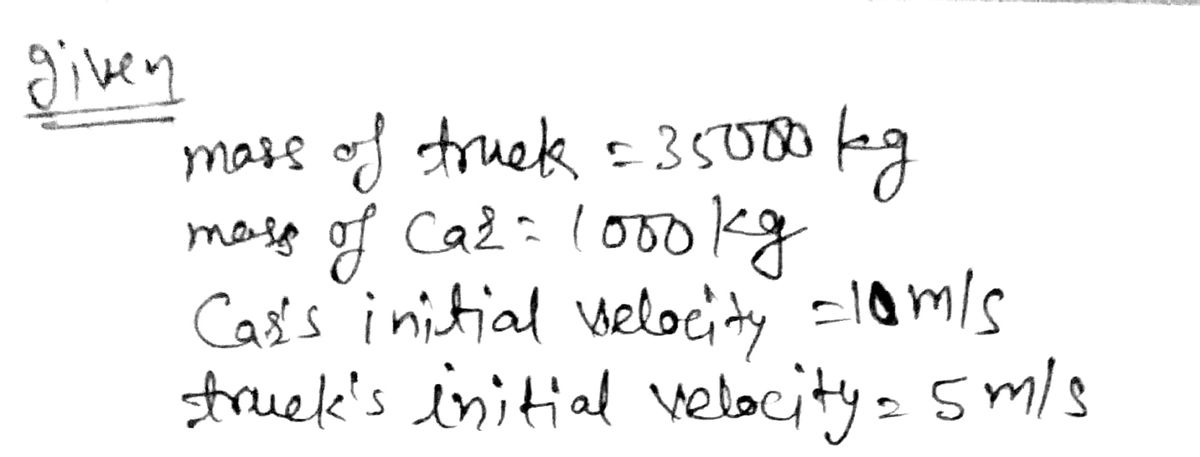1. A large semi truck has a mass of 35,000 kg. It collides head on with a car that has a mass of 1000 kg. The car’s initial velocity is 10 m/s and the truck’s initial velocity is 5 m/s in the opposite direction. What can you say about the forces and velocities of the two vehicles? a) The force that the truck makes on the car is much larger than the force the car makes on the truck so the car’s velocity changes much more than the truck’s does. b) The force that the truck makes on the car is equal to the force the car makes on the truck so the car’s velocity changes by the same amount that the truck’s velocity does. c) The force that the truck makes on the car is equal to the force the car makes on the truck but the mass of the truck is much larger than the car so the car’s velocity changes by much more than the trucks does. d) The mass of the truck is so much larger than the car that the force of the truck on the car is much greater than the force the car puts on the truck and the car velocity after the collision is in the opposite direction.
1. A large semi truck has a mass of 35,000 kg. It collides head on with a car that has a mass of 1000 kg. The car’s initial velocity is 10 m/s and the truck’s initial velocity is 5 m/s in the opposite direction. What can you say about the forces and velocities of the two vehicles?
a) The force that the truck makes on the car is much larger than the force the car makes on the truck so the car’s velocity changes much more than the truck’s does.
b) The force that the truck makes on the car is equal to the force the car makes on the truck so the car’s velocity changes by the same amount that the truck’s velocity does.
c) The force that the truck makes on the car is equal to the force the car makes on the truck but the mass of the truck is much larger than the car so the car’s velocity changes by much more than the trucks does.
d) The mass of the truck is so much larger than the car that the force of the truck on the car is much greater than the force the car puts on the truck and the car velocity after the collision is in the opposite direction.

Trending now
This is a popular solution!
Step by step
Solved in 2 steps with 2 images









